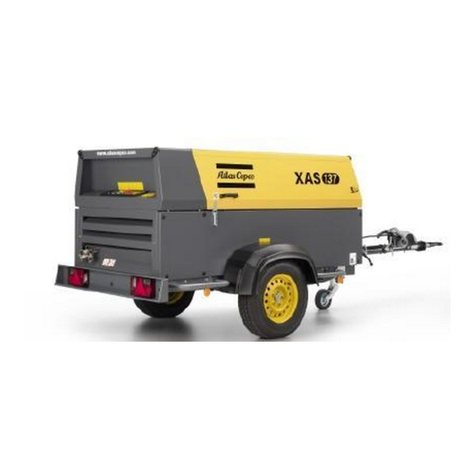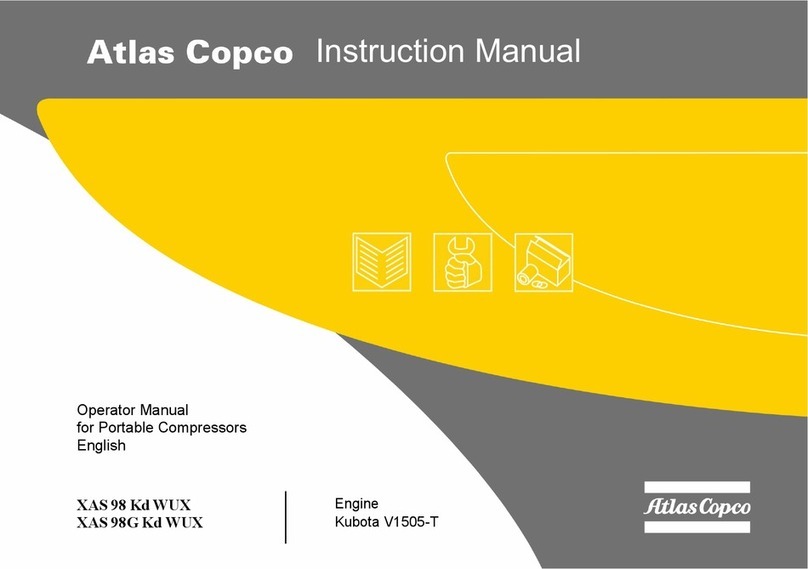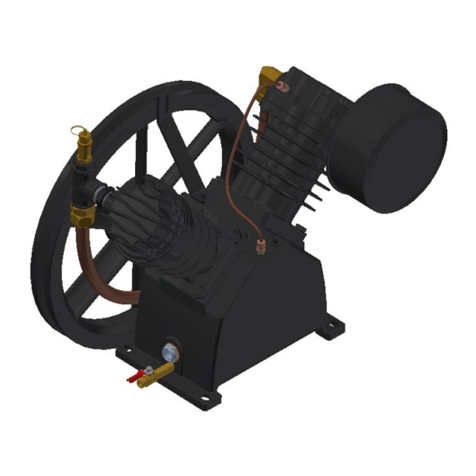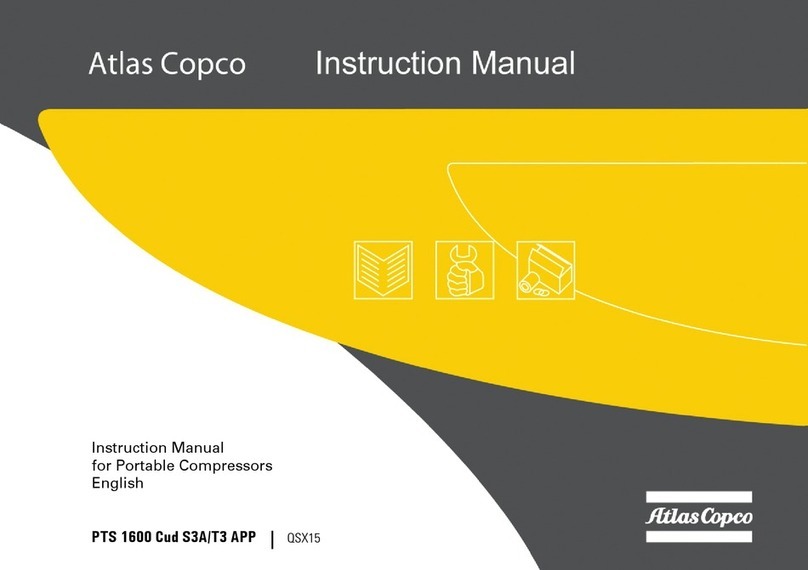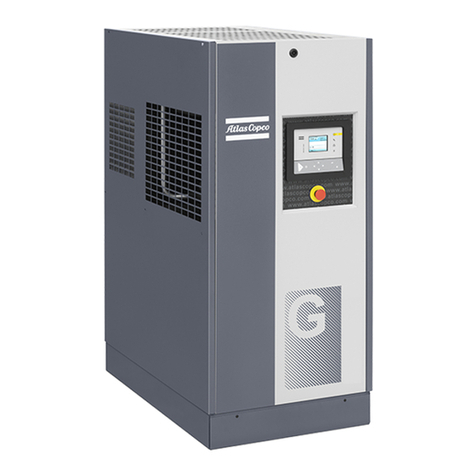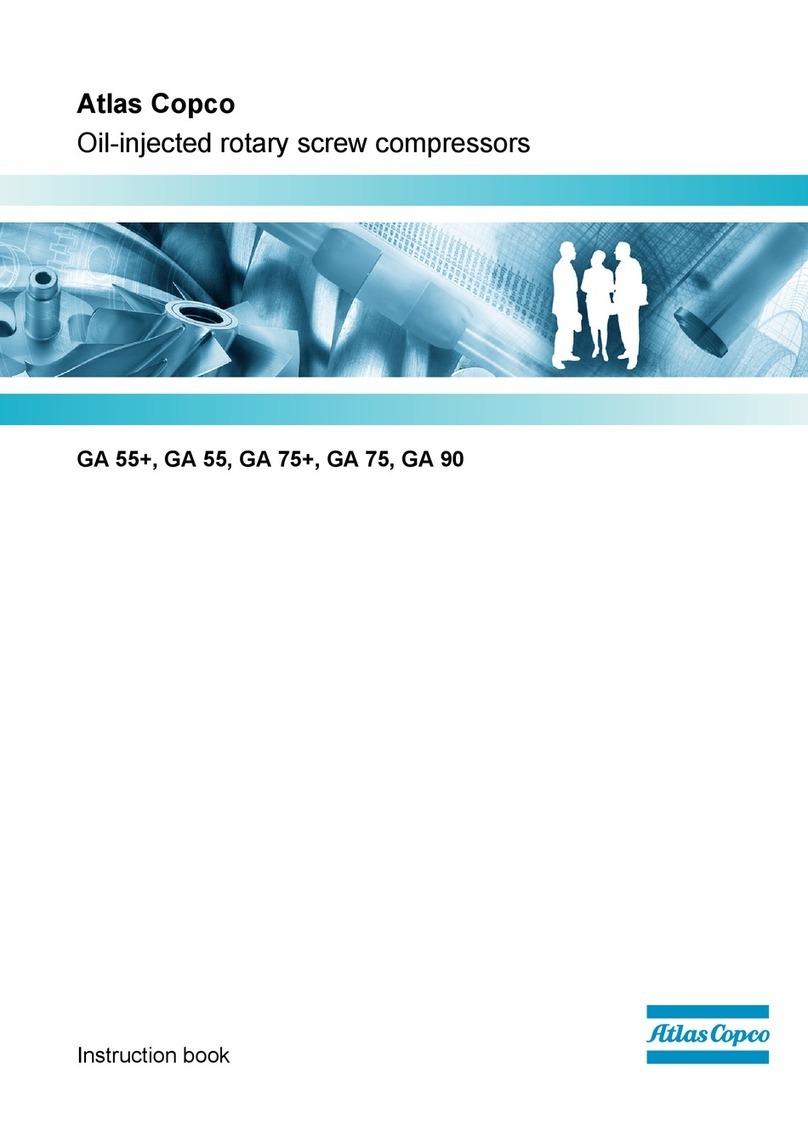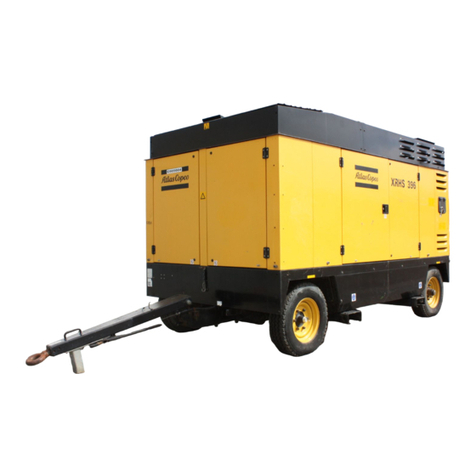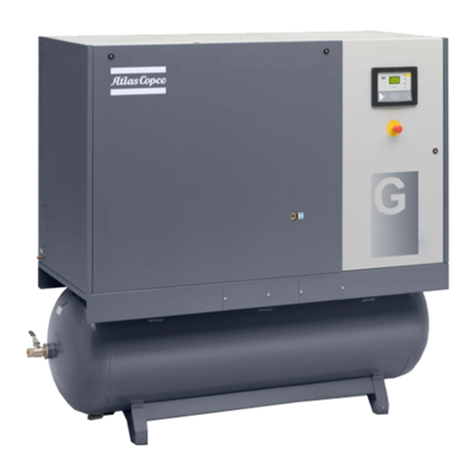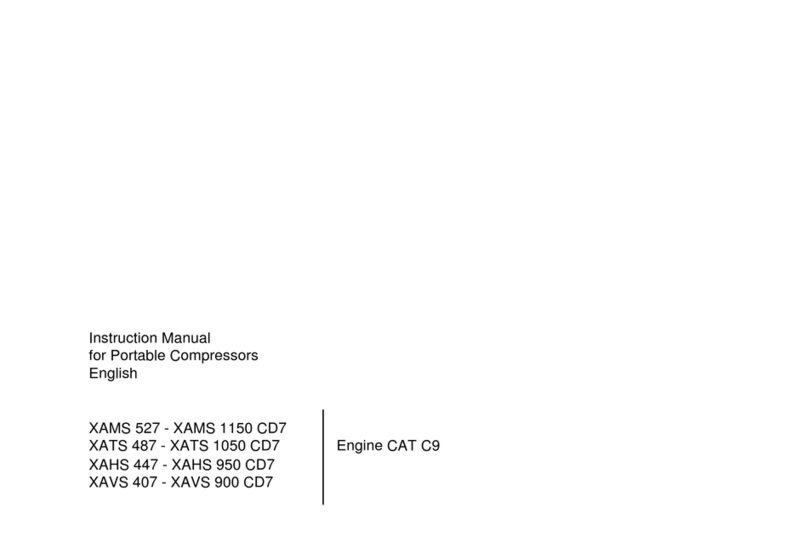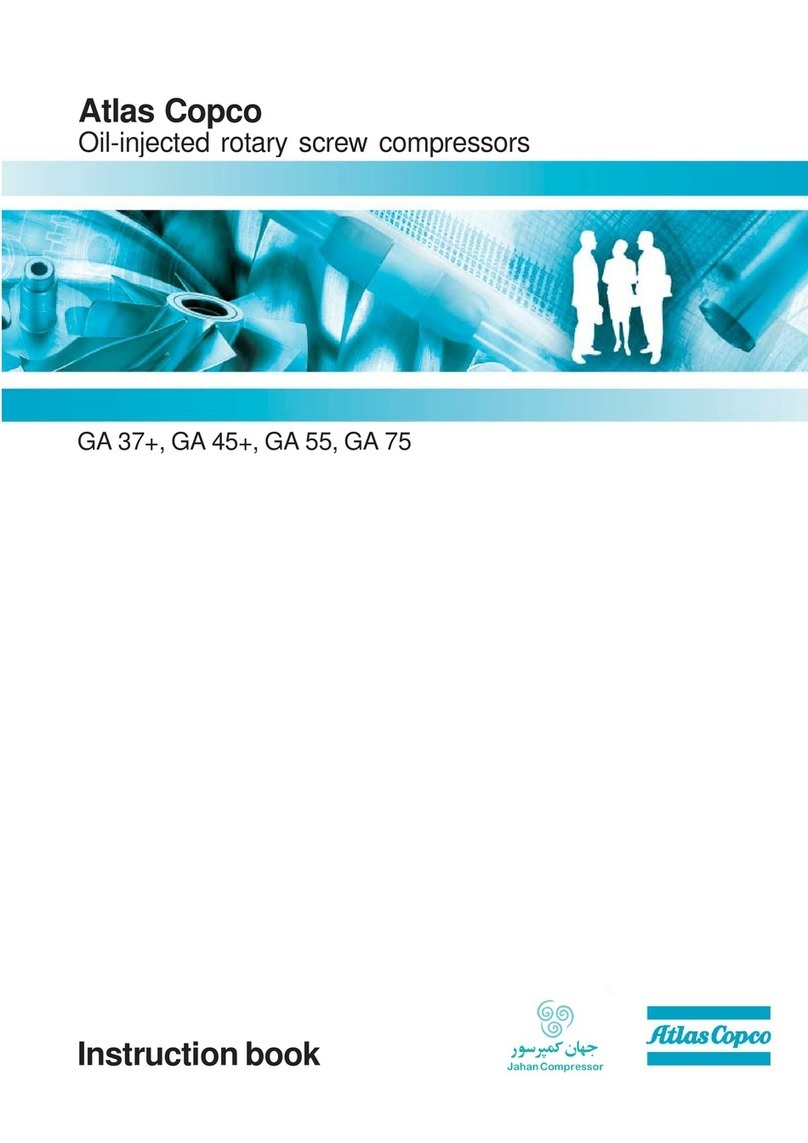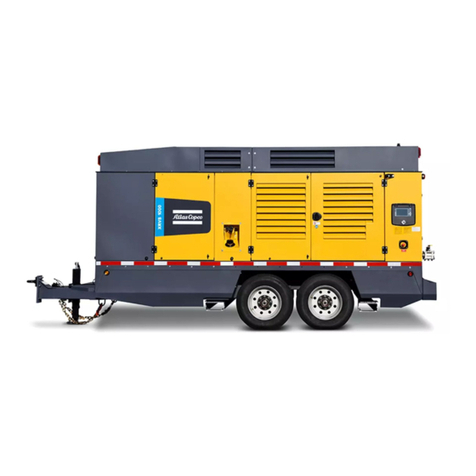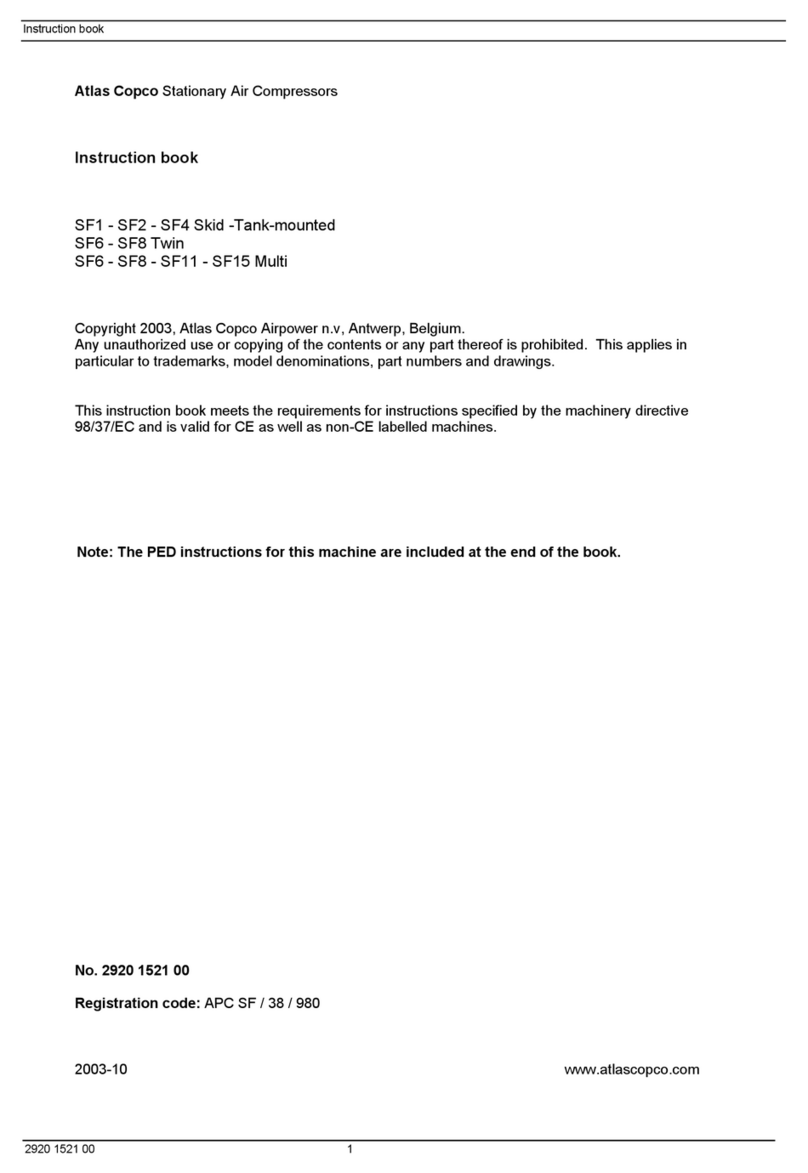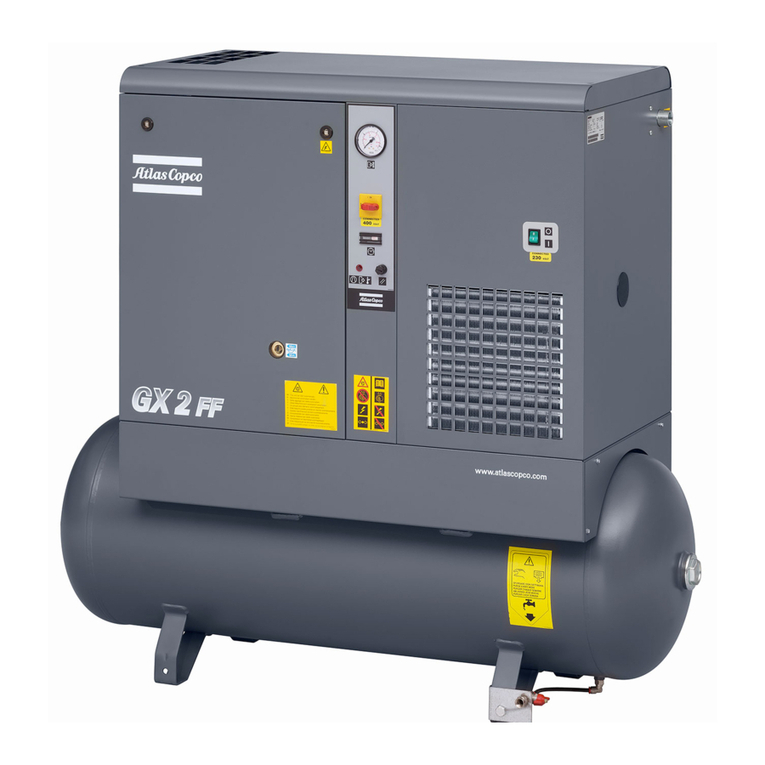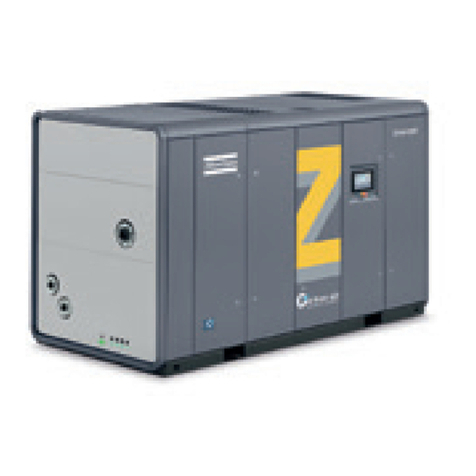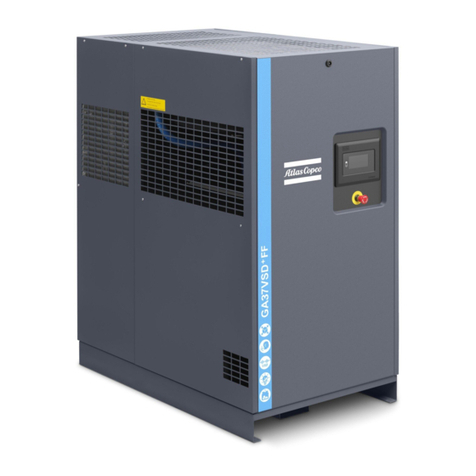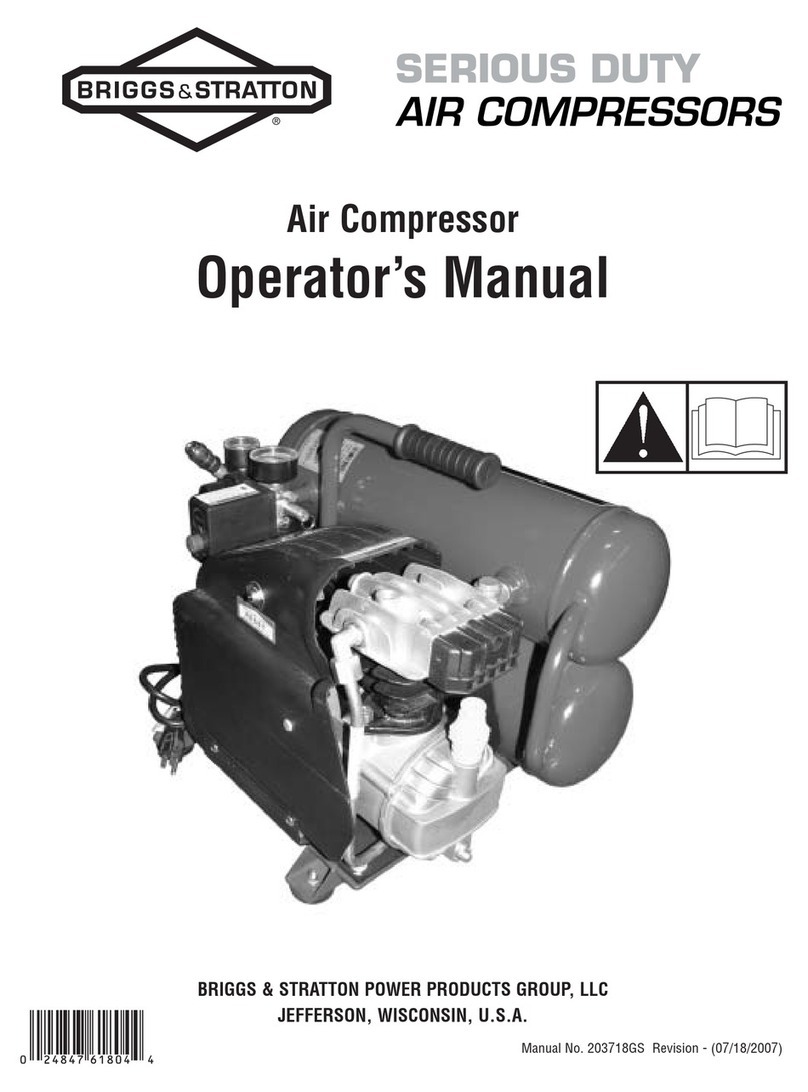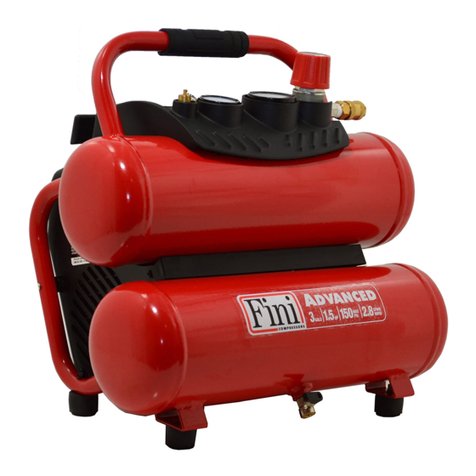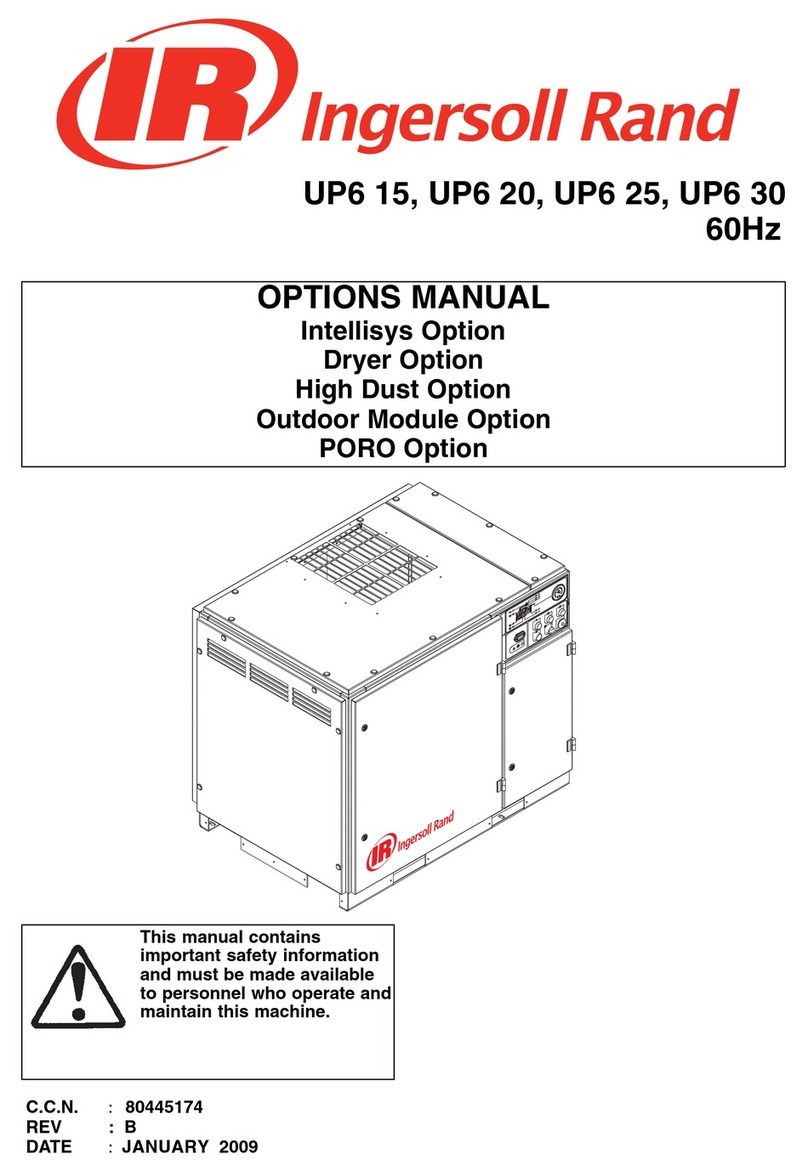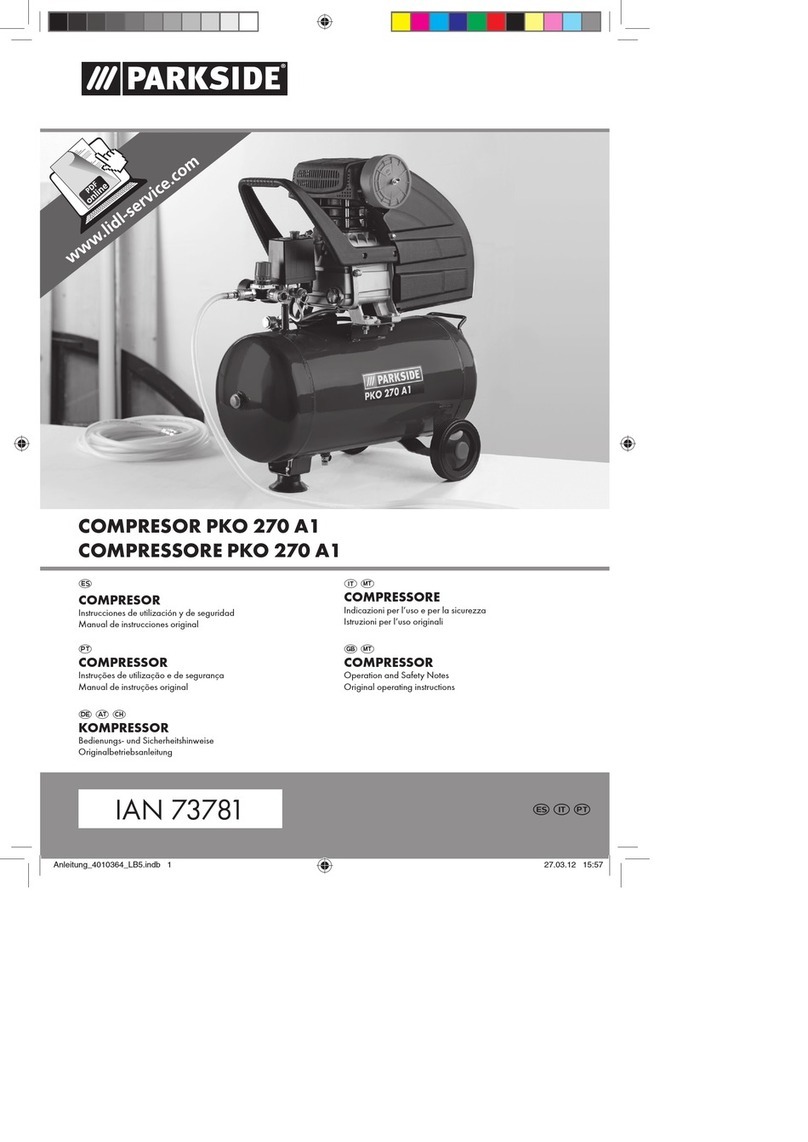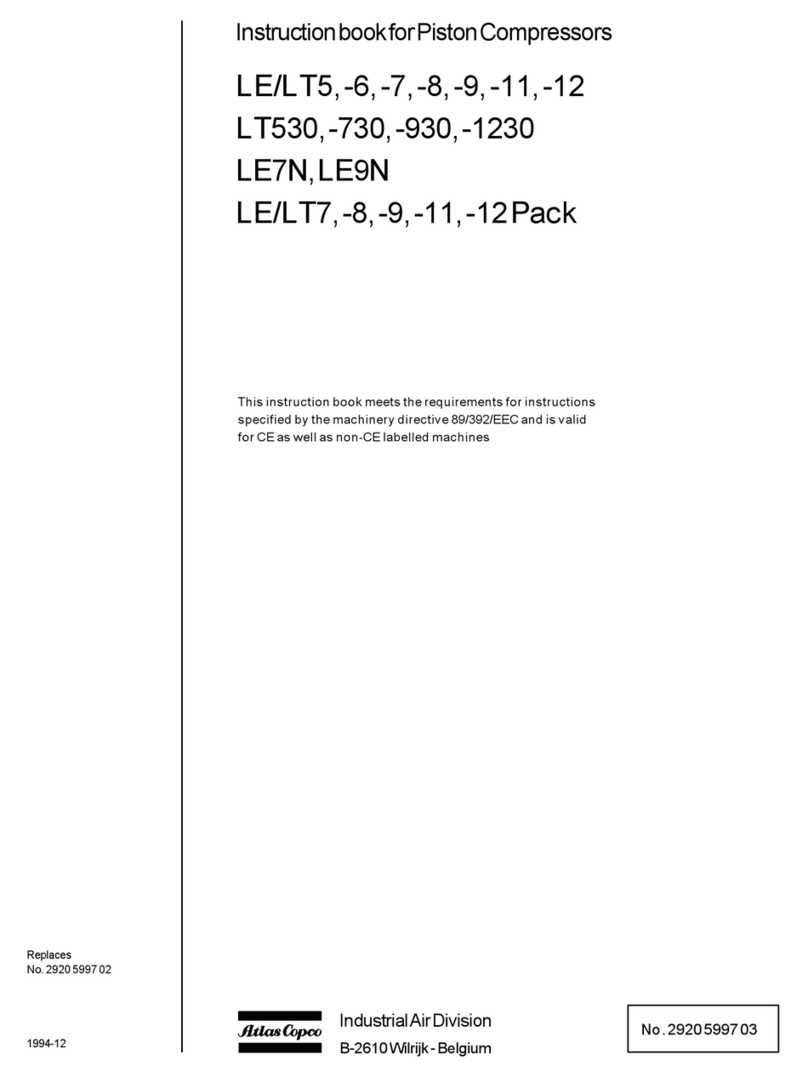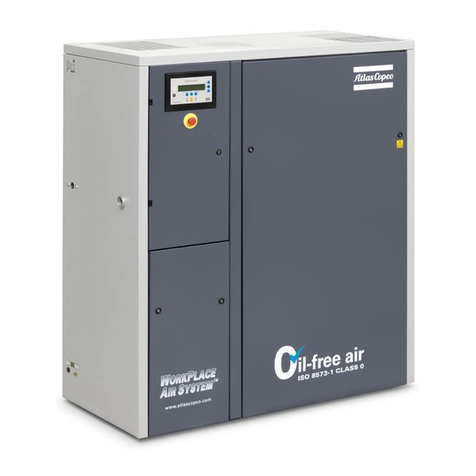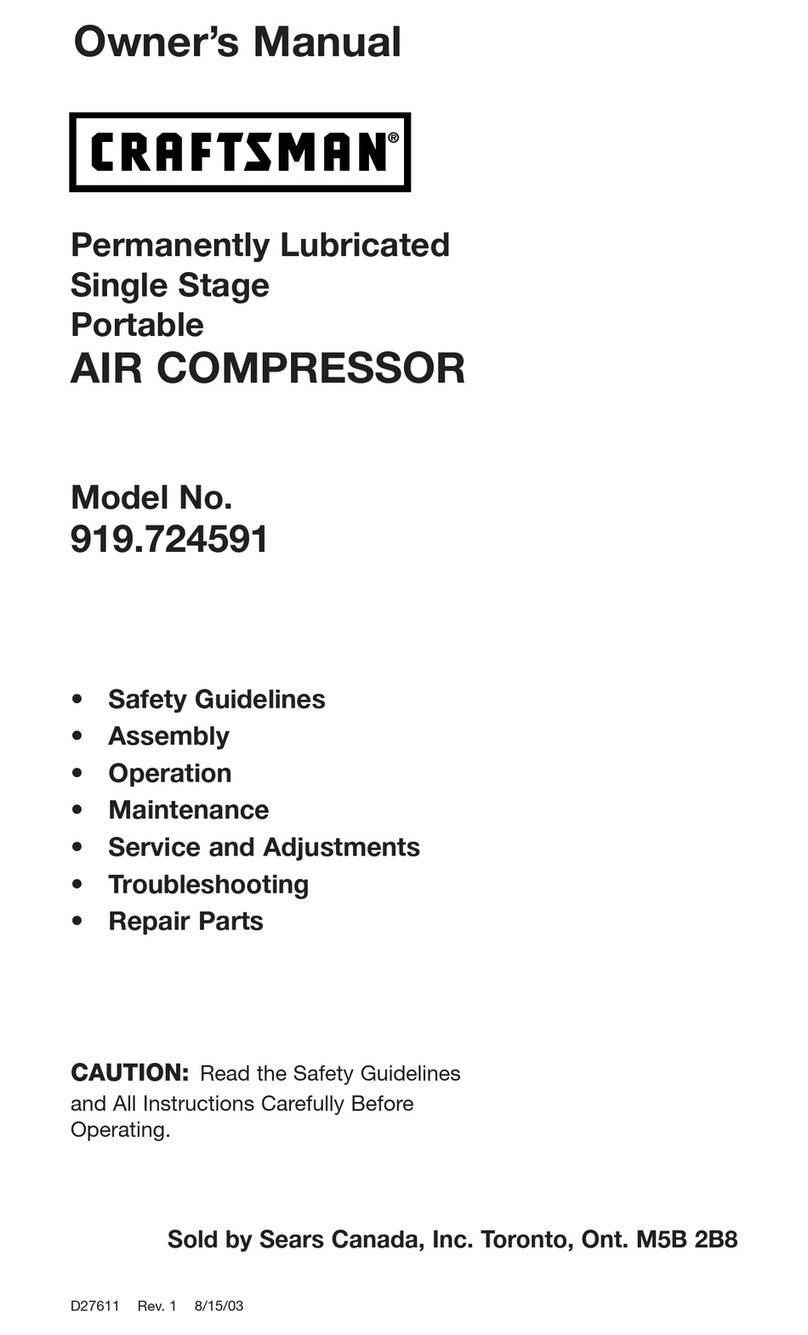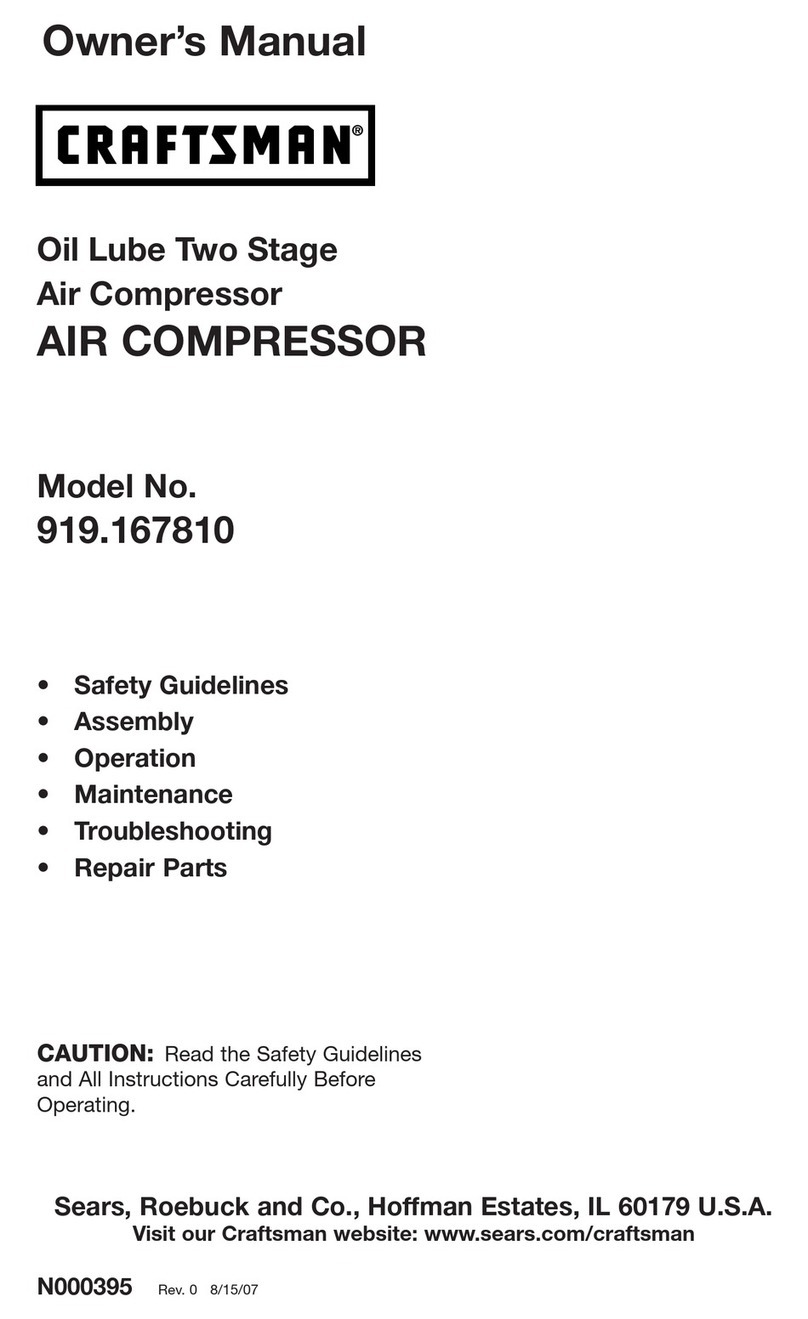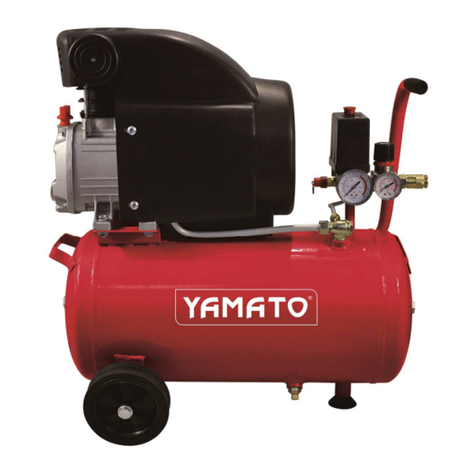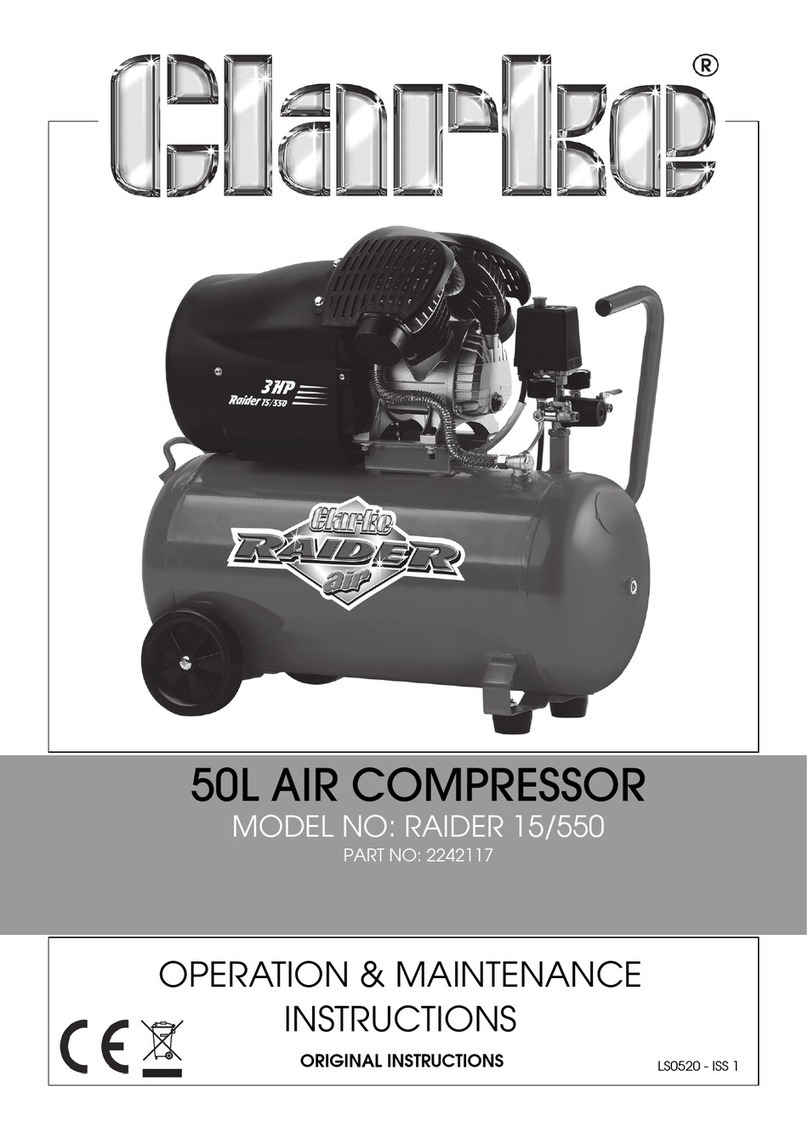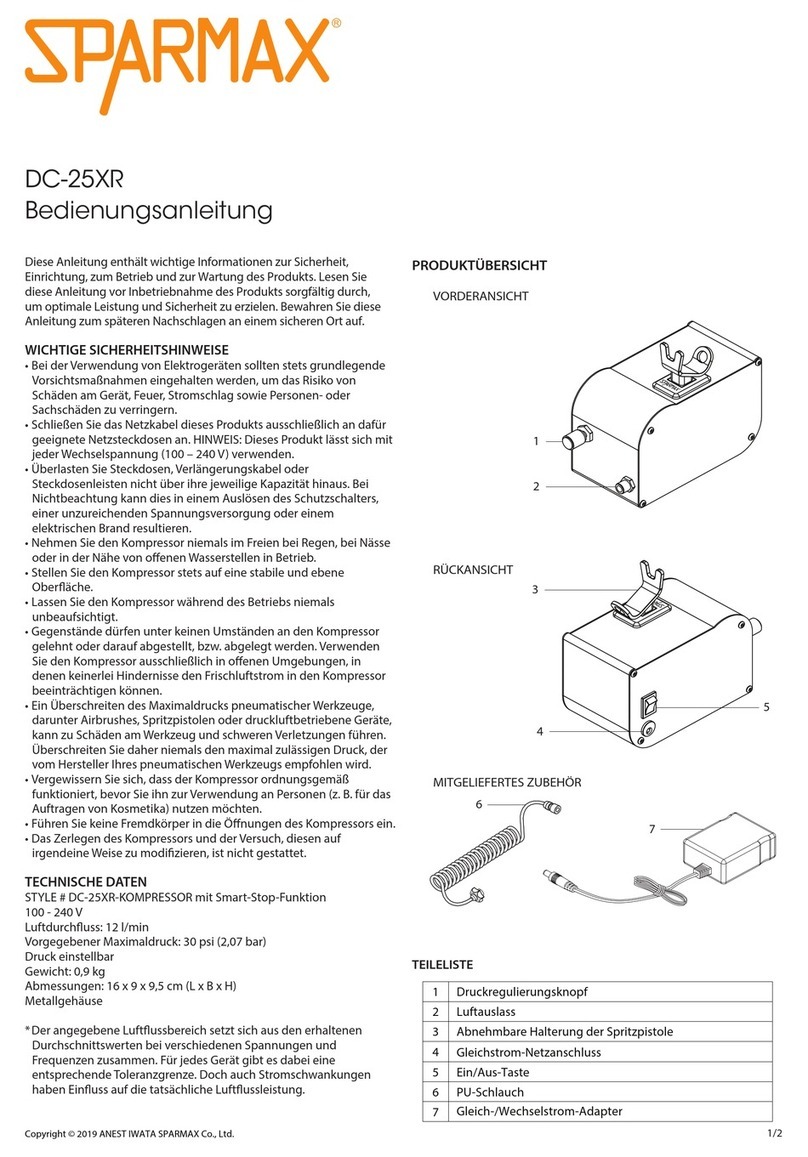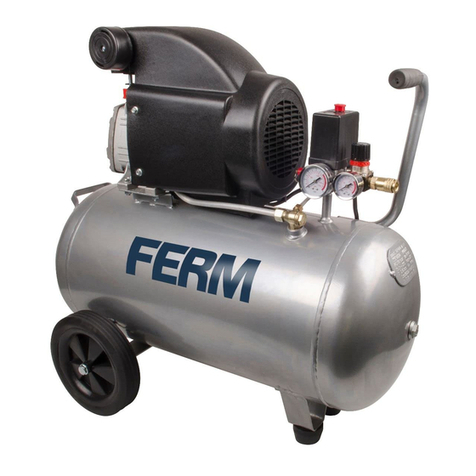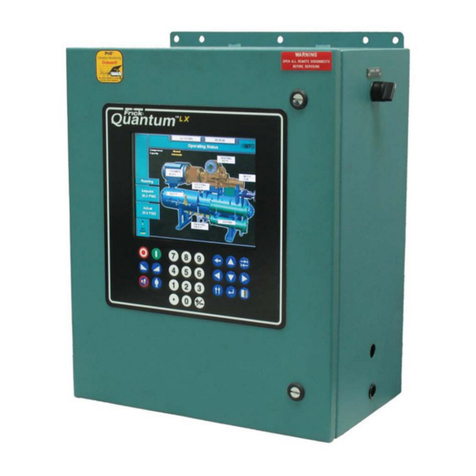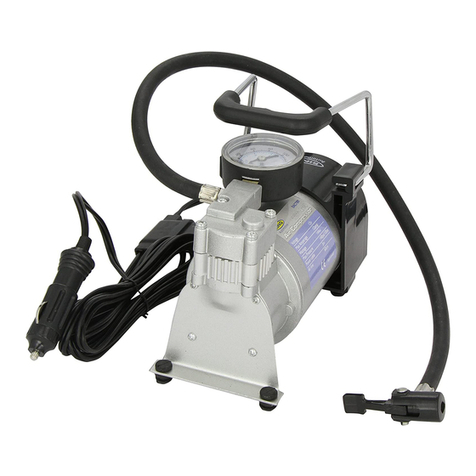
- 8 -
or sparks on a machine, the surrounding components
shall first be screened with non-flammable material.
23 Never use a light source with open flame for inspecting
the interior of a machine, pressure vessel, etc.
24 On portable units, support the drawbar and axle(s)
securely if working underneath the units or when
removing a wheel. Do not rely on jacks.
25 Prior to stripping a compressor, engine or other
machine or undertaking major overhaul on it, prevent
all movable parts with a mass exceeding 15 kg (30 lbs)
from rolling over or moving.
26 When repair has been completed, make sure that no
tools, loose parts or rags are left in, or on, the machine,
the prime mover or the driving gear. The machine shall
be barred several revolutions to ensure that there is no
mechanical interference within the machine or driver.
SAFETY DURING USE AND OPERATION
To lift a unit, all loose or pivoting parts, e.g. doors shall
first be securely fastened. Do not attach cables, chains or
ropes directly to the lifting eye; apply a crane hook or
lifting shackle meeting local safety rules.
Helicopter lifting using the lifting eye is forbidden.
It is strictly forbidden to dwell or stay in the risk zone
under a lifted load. Never lift the unit over people or
residential areas.
Lifting acceleration and retardation shall be kept within
safe limits.
1 Before towing the unit:
- ascertain that the pressure vessel is depressurized,
- check the drawbar, the brake system and the towing eye. Also
check the coupling of the towing vehicle,
- check that the pivot wheel or stand leg is safely locked in
the raised position,
- ascertain that the towing eye can swivel freely on the hook,
- check that the wheels are secure and that the tires are in good
condition and inflated correctly,
- attach the safety break-away cable to the towing vehicle,
- remove wheel chocks, if applied, and disengage the parking
brake.
- Apply safety chains to tow vehicle.
2 If the unit is to be backed up by the towing vehicle,
disengage the overrun brake mechanism (if equipped).
3 Never exceed the maximum towing speed of the unit.
4 Place the unit on level ground and chock the wheels
before disconnecting the unit from the towing vehicle.
Unclip the safety break-away cable
5 When the unit has to operate in a fire-hazardous
environment, each engine exhaust has to be provided
with a spark arrestor to trap incendiary sparks.
6 The exhaust contains carbon monoxide which is a
lethal gas. When the unit is used in a confined space,
conduct the engine exhaust to the outside atmosphere
by a pipe of sufficient diameter (min. 4 inches); do this
in such a way that no extra back pressure is created for
the engine. If necessary, install an extractor.
7 When operating in a dust-laden atmosphere, place the
unit so that dust is not carried towards it by the wind.
Operation in clean surroundings considerably extends
the intervals for cleaning the air intake filters and the
cores of the coolers.
8 Locate the unit away from walls. Take all precautions
to ensure that hot air exhausted from the engine and
driven machine cooling systems cannot be
recirculated. If such hot air is taken in by the engine or
driven machine cooling fan, this may cause
overheating of the unit; if taken in for combustion, the
engine power will be reduced.
9 No external force may be exerted on the air outlet
valves, e.g. by pulling on hoses or by installing
auxiliary equipment directly to a valve, e.g. a water
separator, a lubricator, etc.
10 Distribution pipework and air hoses must be of correct
size and suitable for the working pressure. Never use
frayed, damaged or deteriorated hoses. Replace hoses
and flexibles of which the lifetime expired. Use only
the correct type and size of hose end fittings and
connections. Install safety pins on quick type hose
connections. A hose connected to a 2 inch (50 mm)
valve must be provided with a safety wire (8 mm) fixed
to the hose for effective pressures as from 145 psi (10
bar) up, although it is recommended to apply such
safeguard already from (60 psi) 4 bar up.
The safety wire ends have to be attached, one to the eye
provided next to the compressor air outlet valve, the
other one to a point near to the air inlet of the applied
equipment. Finally a wire mesh hose can be fixed over
the hose ends to dampen the blast in case a connection
starts leaking or should become undone.
Close the compressor air outlet valve before
connecting or disconnecting a hose. Ascertain that a
hose is fully depressurized before disconnecting it.
When blowing through a hose or air line, ensure that
the open end is held securely. A free end will whip and
may cause injury.
Never play with compressed air. Never apply it to your
skin or direct an air stream at people. Never use it to
clean dirt from your clothes. When using it to clean
down equipment, do so with extreme caution and use
eye protection.
11 Never move a unit when external lines or hoses are
connected to the outlet valves, to avoid damage to
valves and/or manifold and hoses.
12 Never refill fuel while the unit is running. Keep fuel
away from hot parts such as air outlet pipes or the
engine exhaust. Do not smoke when fueling. When
fueling from an automatic pump, a ground cable should
be connected to the unit to discharge static electricity.
Never spill nor leave oil, fuel, coolant or cleansing
agent in or around the unit.
13 Never operate the unit in surroundings where there is a
possibility of taking in flammable or toxic fumes.
14 Never operate the unit at pressures or speeds below or
in excess of the limit ratings stated on the Principal
Data sheet.
15 On liquid-cooled engines with closed cooling circuit:
allow the unit to cool before removing a pressure cap.
16 All doors shall be shut during operation so as not to
disturb the cooling air flow inside the body-work and/
or render the silencing less effective. A door should be
kept open for a short period only, e.g. for inspection or
adjustment
17 Wear ear protectors when environmental noise can
reach or exceed 85 dB(A). Beware of long-time
exposure to noise.
18 Periodically check that:
- all safety equipment is in good working order,
- all guards and air conducting baffles are in place and securely
fastened,
- all hoses and/or pipes inside the unit are in good condition,
secure and not rubbing,
